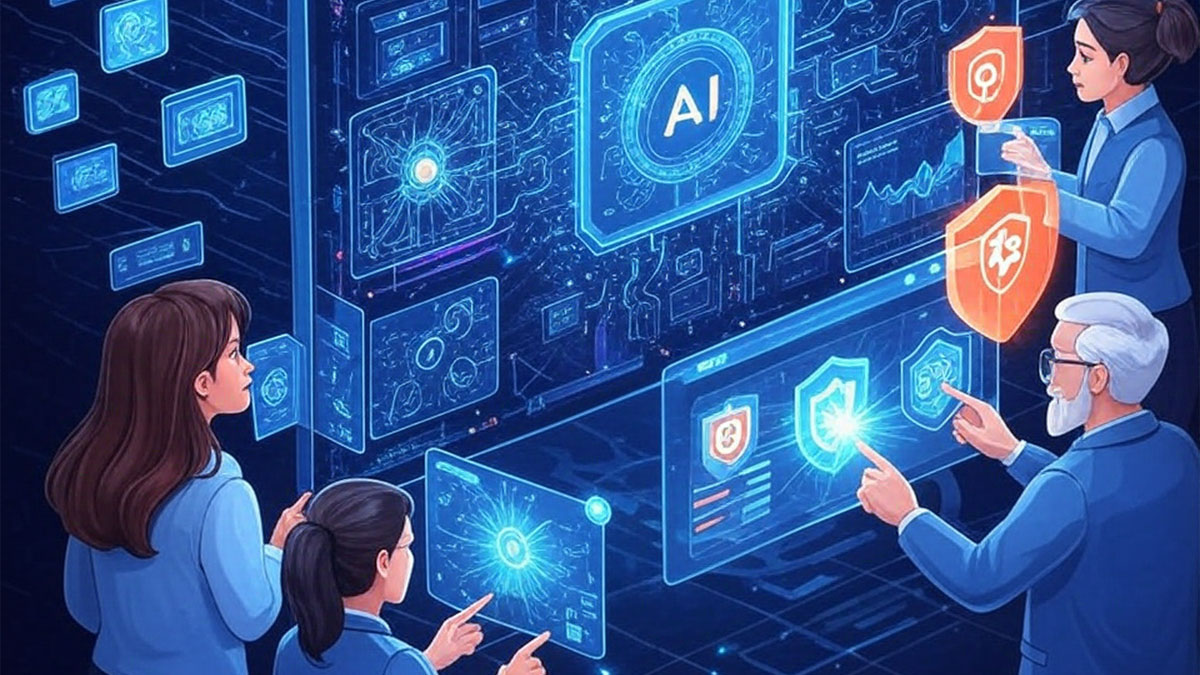From reactive to proactive: Redefining cybersecurity in the age of autonomous agents

The speed of today’s cyber threats has outpaced the speed of human response, demanding a new kind of defence. Artificial intelligence (AI) is stepping up—not as a supporting player, but as the backbone of modern cybersecurity. At the core of this transformation are autonomous agents.
Autonomous agents are AI-driven systems capable of perceiving, reasoning, and acting independently across dynamic as well as hyper-connected environments. Operating at sub-second speeds, these agents enable firms to detect, respond, and neutralize threats in real-time—often faster than adversaries can strike. While the nature of cyber risk continues to evolve, so too must the approach of cybersecurity leaders. Autonomous intelligence isn’t just enhancing security; it’s redefining what effective defence looks like.
Unlike conventional SOAR tools or rule-based automation, agentic AI adjusts to new types of threats and constantly improves how it responds. It significantly reduces human dwell time from minutes to milliseconds. As a result, delays are avoided in the frontline response. Yet with such autonomy comes an imperative for rigorous oversight. This means, setting clear rules for AI engagement protocols, continuous telemetry, and resilient governance frameworks. As organisations transition from human-led defence to autonomous orchestration, the strategic imperative is clear: cybersecurity must be redefined—not just accelerated.
The obsolescence of reactive defences
Legacy cybersecurity paradigms—rooted in perimeter defence, static rule sets, and human-centric response workflows—are becoming outdated. In a landscape marked by distributed infrastructure, ephemeral workloads, and relentless attack automation, the reactive model simply cannot scale.
Today’s threat actors are leveraging AI to deploy phishing kits, weaponise ransomware-as-a-service, automate credential stuffing, and exploit vulnerabilities at microsecond speed. According to Cybersecurity Ventures, the projected global economic impact of cybercrime is set to reach $10.5 trillion annually by the close of 2025—a testament to both the volume and velocity of adversarial activity. In this context, delays in detecting attacks mean failure. Defences must act immediately at the point of attack—not minutes or hours later.
Agentic AI: Cybersecurity’s new operating core
Agentic AI refers to autonomous, context-aware agents capable of perceiving digital states, reasoning over intent, and taking informed actions—all without human initiation. These agents integrate perception, memory as well as real-time inferencing to function as distributed decision-makers embedded across infrastructure. In practice, they can automatically isolate infected devices, stop suspicious privilege escalations, or adjust firewall rules—not based on fixed instructions but by analysing real-time and historical data.
As compared to conventional automation, these agents operate with context awareness, dynamic reasoning, autonomous response, and continuous learning. They don’t follow set playbooks; instead, they adjust their actions based on what’s happening. This intelligent autonomy is not simply a faster version of automation—it is a leap in cyber cognition. The global agentic AI in cybersecurity market is projected to reach $173.47 million by 2034, underscoring its emergence as a strategic asset.
Intelligent security fabric for hybrid ecosystems
Contemporary digital ecosystems are characterised by extreme heterogeneity: multi-cloud environments, legacy systems, IoT, remote workforces, and interconnected third-party systems. Each introduces its own telemetry, vulnerabilities and tooling. Agentic AI acts as an intelligent abstraction layer—unifying security across fragmented domains. It correlates telemetry, coordinates policy enforcement, and reprioritises defences in accordance with dynamic risk profiles.
In hybrid deployments—where conventional tooling falters—agentic systems offer vertical integration, adaptive control, and proactive orchestration at machine speed. It goes beyond simple task automation by managing workflows, improving response plans, and maintaining consistent protection across all systems—something traditional SIEM tools and fixed policies struggle to do.
Wrapping Up
The progression from reactive to proactive cyber defence is no longer aspirational—it’s an immediate business imperative. Firms that integrate agentic AI into their security strategies will not just protect their assets; rather, they’ll set the standard for resilience in the AI age. From a system of delayed reactions to one of anticipatory as well as adaptive defence, agentic AI transforms cybersecurity significantly when deployed responsibly.
For cybersecurity leaders, the mandate is quite clear: embrace the convergence of human insight and AI speed. This is not a future scenario—it’s the strategic edge today. Those who act now to operationalise this synergy will define the next generation of trust, safety, and cyber readiness in a landscape that demands nothing less.
Neehar Pathare is the Managing Director, Chief Executive Officer & Chief Information Officer of 63SATS Cybertech Ltd. The opinions expressed in this article are those of the author and do not purport to reflect the opinions or views of THE WEEK.
Sci/Tech